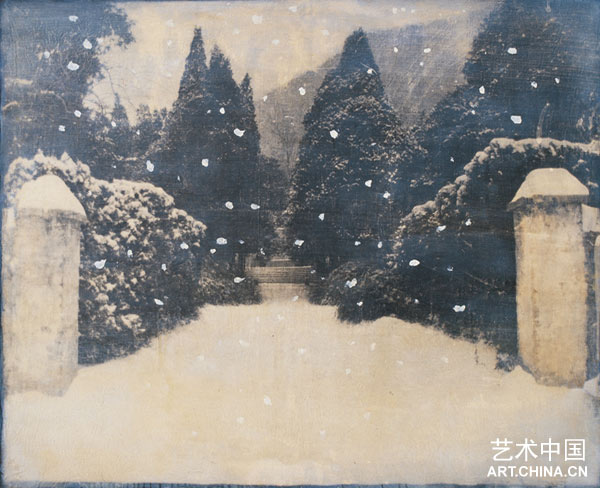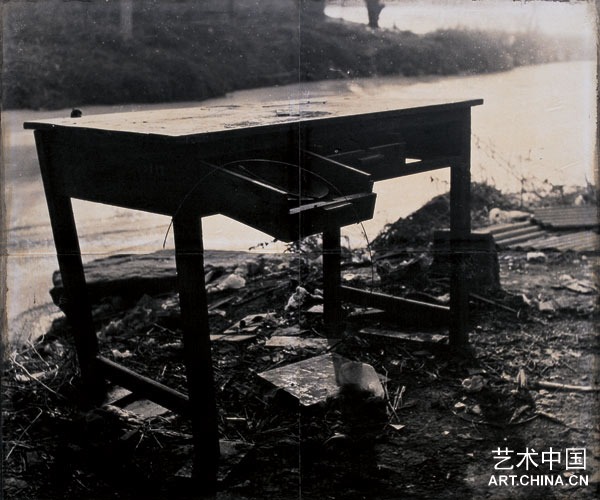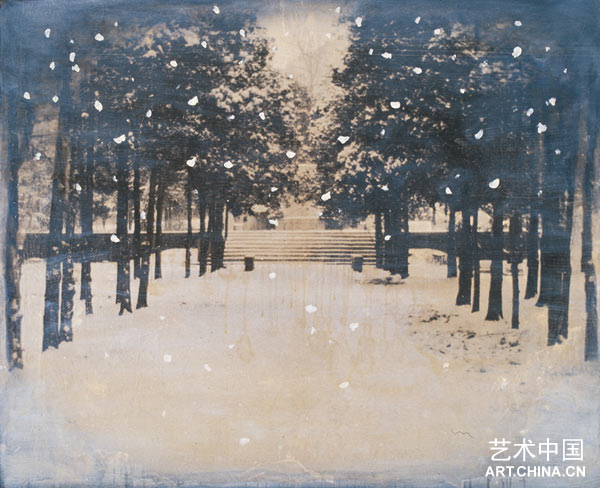
“我不喜歡悲哀, 但是它存在于歷史之中, 這一點對我們的未來很重要。”
“雪凈化歷史”
仁藝術中心很榮幸地推出殤—師若個人作品展。 展覽包括藝術家圍繞著中國悲劇性的歷史的攝影作品和綜合材料作品。
作為畫家、攝影家、導演的師若,其作品充滿著使人產生抑郁和悲劇性的情感,通過藝術家自身對中國歷史的回想,分析研究中國知識分子從古至今一直持續著的斗爭。
此次展覽展出的攝影作品包括有關清朝晚期改良主義者、思想家和歷史學家梁啟超 (1873-1929) 墳墓及無名烈士墳墓的作品,以及90年代拍攝于圓明園的作品,這些都獻給無名的藝術家。
師若通過把永駐不變的建筑與時間腐蝕的風景、物體結合起來,展示出他對存在周期本質的理解。
20歲時當過道家修士的師若,解釋在他的照片中經常出現的雪代表著純潔。 通過雪來試圖凈化過去的痛苦。師若對歷史的態度類似一個文人: 在政治混亂的時期, 決定遠離世俗, 以藝術創作和于大自然的結合給以自己慰籍。 藝術家心里所產生的痛苦來源于他的分離與自身卷入的精神矛盾。
師若簡歷
歷史與心靈的風景——師若作品
"I don't like sadness, but it exists in history, which is important for our future."
"The snow purifies history"
Yan Club Arts Center is proud to present the work of Shi Ruo. Photography and mixed media works dealing with China's tragic history.
Painter, photographer and film director, Shi Ruo's work is charged with a melancholic and theatrical feeling. Through his memories of Chinese history he explores the tragic consciousness that intellectuals in China, in ancient as in modern times, struggle with.
The exhibition includes works depicting the tomb of Liang Qichao (1873-1929, reformist, thinker and historian in the late Qing Dynasty), the Tomb of the Unknown Soldier and photos taken in Yuanmingyuan in the 90s, which Shi Ruo dedicates to the unknown artist.
By combining the opposing elements of perennial, immovable architecture with landscapes, objects and stone eroded by time, Shi Ruo shows his understanding of the cyclical nature of existence.
Shi Ruo, who was a Daoist monk during his early 20s, explains that the snow in his photographs represents purity; a way or a desire to clean the pain of the past. In fact, Shi Ruo's attitude towards history reminds of that of a scholar who, in times of political trouble, chooses to detach himself from the mundane, consoling himself with art and nature. The artist's grief results from the spiritual self-conflict between detachment and involvement.


|

